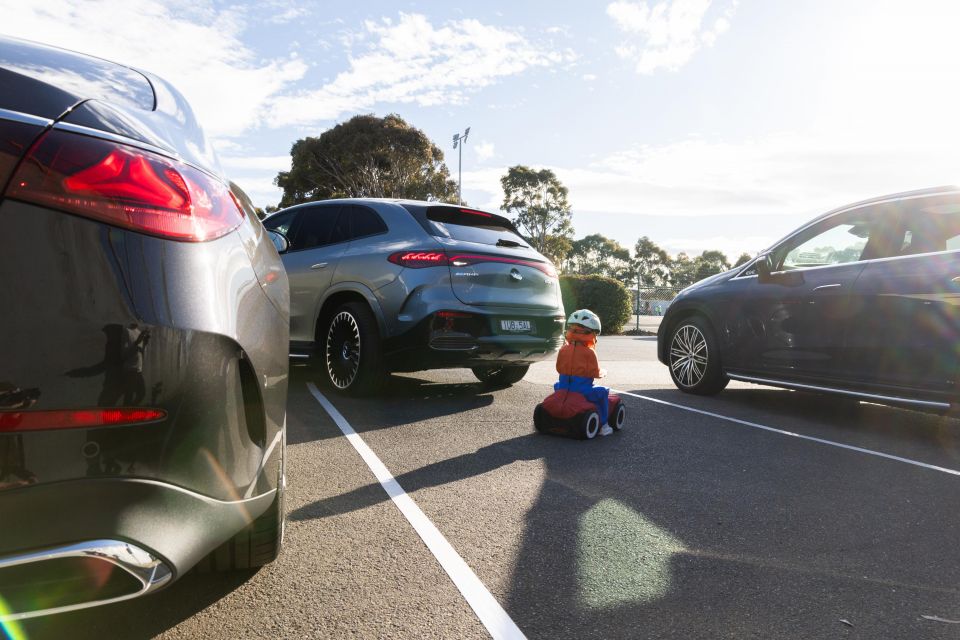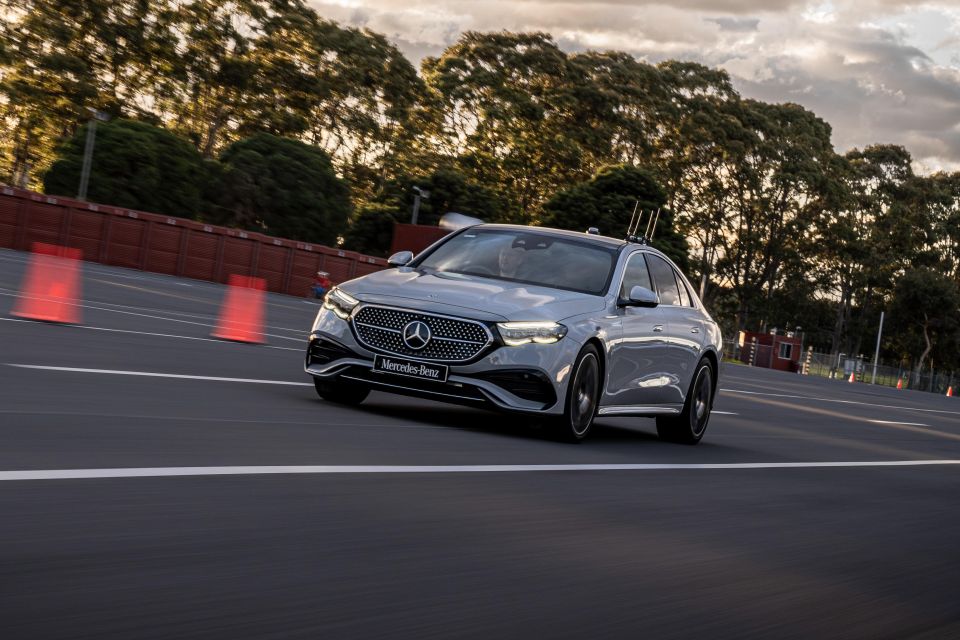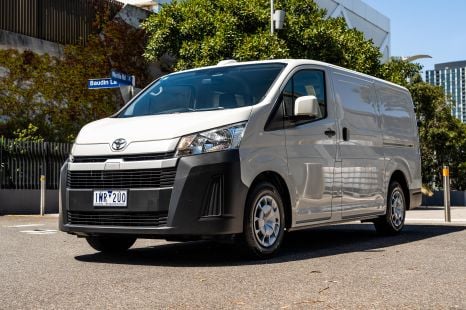

Josh Nevett
2025 Hyundai Ioniq 9 review
4 Days Ago
Mercedes-Benz's head of active safety and testing says his team will beta test new autonomous driving technology, not the brand's customers.

Marketplace Editor


Marketplace Editor
Mercedes-Benz has stood firm on its stance that its customers shouldn’t be testing pre-release autonomous driving and driver assist software.
The head of active safety and testing at Mercedes-Benz, Jochen Haab, told CarExpert he believes the responsibility is on the manufacturer to ensure systems are “as safe and as mature as possible”.
“Half my team would be out of business!” Mr Haab joked, before continuing: “We do the beta testing, my team calls it field validation.”
“It’s our approach to have a mature system on the market, and to get it mature [and] in market. That doesn’t mean… if we find things to improve we won’t improve them [via over-the-air updates].

“But when we bring it on the market, you will have the use case, you will have the check box, and you will have the star stamp on it – I don’t want to be arrogant – that ‘Jochen and his team beta tested it for me’.
“That’s the approach we do, because you never know who drives it. I have that in my own family – my kids, okay they’re older now, but when they started to drive I wouldn’t want them to have a beta version.
“Of course, you don’t have to drive the beta version but no, I don’t believe in it.
“I think it’s the responsibility of the manufacturer to ensure a system is as safe as possible and as mature as possible. That’s the Mercedes way of doing it as well.”

At Mercedes-Benz’s recent Intelligent Drive Insight event, Mr Haab and his team detailed Drive Pilot – the brand’s new Level 3 autonomous driving systems that are being rolled out in select regions with models like the S-Class and EQS.
Where permitted – currently limited to sections of highway in places like Germany and California – Mercedes-Benz Drive Pilot can be activated via steering mounted controls and facilitate conditionally automated driving at speeds up to 60km/h.
Turquoise-coloured lighting will illuminate the steering controls and the instrument cluster to signify the system’s activation, and the vehicle will take over from the driver without requiring hands on the wheel or full driver attention. There are range countdowns for the automated zone calculated using map data.
If driver control is required, the aforementioned turquoise sections will glow red, and the driver has a short space of time to regain control of the vehicle or it will safely pull over as part of an emergency stop.
Later this year, Mercedes-Benz hopes to up the capability to more than 90km/h in Germany, and roll out the extended speed range in other relevant markets. By the end of the decade, Mercedes aims to have Drive Pilot capable of up to 130km/h.

Under the skin, Drive Pilot-equipped vehicles require two times the computing power of current vehicles running Level 2 autonomy systems, and the brand has baked in a redundant system architecture in case System 1.0 fails.
Vehicles equipped with Drive Pilot feature an additional battery, as well as separate wiring to systems like brakes and steering. That’s in contrast to Tesla, which removed radar and ultrasonic sensors for its driver assist systems.
The American electric vehicle marker’s outspoken CEO, Elon Musk, has even been publicly critical of the use of LiDAR in vehicles despite the technology forming a big part of many brands’ autonomous driving systems.
Tesla has also been known to remove various components including parking sensors and other modules – including a backup steering control unit – to save costs and semiconductors.
Further, the brand’s Autopilot brand marketing and public beta testing of its so-called Full Self-Driving have come under fire from numerous authorities due to numerous reports of collisions and driver misuse resulting in accidents.

While Mercedes-Benz’s Level 3 tech is currently limited to its expensive flagship models for the time being, it’s understood the next-generation CLA could be a kickstarter for its availability in more affordable models.
Previewed by the Concept CLA Class at last year’s Munich motor show, the next-generation CLA is expected to be launched sometime in 2026 riding on a new scalable platform called MMA which will accommodate combustion and electric powertrains.
The 2023 concept was claimed to offer Level 2 partially automated driving, though the fitment of LiDAR suggests the capability could be expanded ahead of its market launch.
Still, today’s Level 2+ tech allows drivers in select regions to drive hands off on sections of highway provided the vehicle detects the driver is attentive.

Do you agree with Mercedes-Benz’s stance? Share your thoughts in the comments below
James is an automotive journalist based in Melbourne, Australia. Before joining CarExpert.com.au in 2020, James has worked at leading auto media outlets including Carsales and CarAdvice, as well as at Pulse agency for Ford Australia's communications team. In 2019 James made Mumbrella's 'Top 20 most prolific web authors in Australia' list after publishing 1,360 articles between March 1, 2018 and February 28, 2019 for CarAdvice. James is also an Ambassador for Drive Against Depression – an Australian charity whose mission is to support mental wellness through the freedom of driving and a shared love of cars.


Josh Nevett
4 Days Ago


James Wong
4 Days Ago


Max Davies
4 Days Ago


Andrew Maclean
3 Days Ago


Max Davies
2 Days Ago


Damion Smy
7 Hours Ago